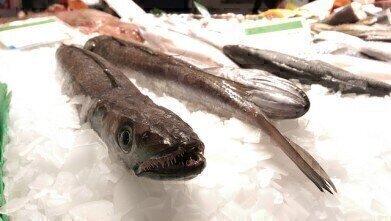Bioanalytical
How Fresh is Your Frozen Fish? Chromatography Investigates!
Feb 02 2016
Have you ever wondered how fresh your frozen fish was at the time of freezing? We’d all like to think that our salmon, haddock or trout was deposited into a bucket of ice directly after being caught and never thawed out until it reached our dinner plate. But the reality is that we have no real way of discerning whether the fish in question was minutes, hours or days old before it found itself at sub-zero temperatures.
While this represents a minor concern for most of us, in countries like Japan, it’s a real health issue. A significant proportion of seafood there is consumed raw — in sushi, sashimi or other uncooked form, so it’s imperative that the produce in question is of the finest and freshest quality to avoid major health complications. Therefore, it comes as no surprise that Japanese scientists lead the way in developing innovative new methods to investigate exactly how fresh a frozen fish product is.
Problems with existing methods
Of course, while it remains nigh on impossible for the man on the street to determine freshness of frozen produce, a solution to the conundrum has been known for many years in the laboratory. The traditional method of determining freshness involved chemically examining the nucleotide compounds present in the fish, and from this information extrapolating a K-value — a measure of how far ATP degradation has progressed in the flesh.
While this method does produce accurate results, it has the disadvantage of being fairly time-consuming.
“We need at least one or two days from intensive laboratory works to identify whether such a fish sample was fresh before getting frozen or not”, explained Professor Emiko Okazaki, one of the lead scientists on the new study. “It will be very interesting to find an alternative tool to shorten this very prolonged time of analysis.”
Fluorescence detection to the rescue
In a bid to shorten sampling times, the team of Japanese researchers pioneered the use of autofluorescence spectroscopy, a type of spectroscopy which detects fluorescence levels in a specimen.
Of course, fluorescence detection is not a new technique in itself, having been used in the biopharmaceutical industry as discussed in the article, Strategies for the Characterisation of Biopharmaceuticals.
By analysing the fluorescence levels of fish — of known and differing levels of freshness — and comparing these with reference freshness values determined using high-performance liquid chromatography (HPLC), scientists are able to determine which EEMs correspond to which levels of freshness. They can then look for these same fluorescence amounts in frozen fish of unknown freshness and estimate its freshness.
Though still in its infancy, the technique could represent a major breakthrough in how sea products are assessed for freshness — saving food quality standard agencies countless hours in the laboratory and getting the frozen fish from trawler to dinner table quicker than ever before.
Digital Edition
Chromatography Today - Buyers' Guide 2022
October 2023
In This Edition Modern & Practical Applications - Accelerating ADC Development with Mass Spectrometry - Implementing High-Resolution Ion Mobility into Peptide Mapping Workflows Chromatogr...
View all digital editions
Events
Apr 28 2024 Montreal, Quebec, Canada
May 05 2024 Seville, Spain
May 15 2024 Birmingham, UK
May 19 2024 Brno, Czech Republic
May 21 2024 Lagos, Nigeria














